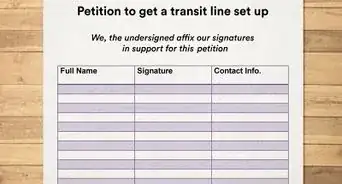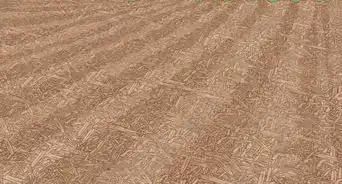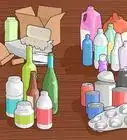This article was co-authored by Natalie Kay Smith and by wikiHow staff writer, Danielle Blinka, MA, MPA. Natalie Kay Smith is a sustainable fashion writer and the owner of Sustainably Chic, a sustainability-focused blog. Natalie has over 5 years of sustainable fashion and green living writing and has worked with over 400 conscious brands all over the world to show readers fashion can exist responsibly and sustainably.
There are 9 references cited in this article, which can be found at the bottom of the page.
wikiHow marks an article as reader-approved once it receives enough positive feedback. In this case, 91% of readers who voted found the article helpful, earning it our reader-approved status.
This article has been viewed 110,885 times.
Going green is a great way to reduce your environmental footprint and help the planet. Being green is all about reducing how many resources you use, reusing items when you can, and recycling items that can’t be reused. If you’re ready to go green, start by changing your personal habits and giving your home a green makeover. Additionally, change your habits at work and on the go to be as green as possible.
Steps
Changing Your Personal Habits
-
1Carry a reusable water bottle so you will not need bottled water. While bottled water is convenient, it is also really bad for the environment. Not only does it create trash, but it also uses more resources because it’s shipped to the store. To be more eco-friendly, make it a habit to carry a reusable water bottle with you everywhere so that you can drink water on the go.[1]
- Plastic bottles are usually the lightest and most convenient. Look for one that says it’s BPA free.
- You can also find aluminum and glass water bottles that are a great option if you don’t like using plastic.
-
2Use reusable bags while you’re shopping. Shopping bags make it easy to carry your items home, but they also pollute the planet. Skip the store’s shopping bags and bring your own instead. Use a backpack or tote that you already own, or purchase a couple of reusable bags from the checkout area at your local grocery store.[2]
- You can use your reusable bags at most stores, including clothing or bookstores.
- Keep your bags in your car so that it’s less likely you’ll forget them.
Advertisement -
3Reuse items to save them from the landfill. Before you throw something away, look for ways you might reuse it. Try re-purposing items or making green crafts. This will help you keep trash out of the landfill.[3]
- For example, instead of throwing away a jar, you might use it as a glass, vase, or storage container.
- Similarly, you could use a piece of cardboard to make a wreath.
- You can find ideas for green crafts by searching online.
-
4Reduce the amount of time you spend using electronics. While electronics are really fun and likely help you feel connected to your friends, they also use up a lot of energy. Schedule breaks from your electronics so you can use them less. During your breaks, do something fun like going for a walk, playing a game with your friends, or pursuing a hobby.[4]
- Invite your friends to connect with you in real life. For instance, instead of playing online video games together, go to a local park.
-
5Skip products that have a lot of packaging. Products that come with a lot of packaging are bad for the environment because the packaging is waste. Even if you recycle the package, it’s still an unnecessary waste of resources. Do your best to pick products that have as little packaging as possible. This can keep more trash out of landfills and save natural resources.
- For example, let’s say you’re buying a notebook for school. If you’re choosing between a notebook that’s wrapped in plastic and one that isn’t, pick the unwrapped notebook.
-
6Buy second-hand products or borrow items instead of buying them new. Buying stuff generates more waste and pollution, so try not to purchase things you don’t need. When you do need something, shop local thrift and second-hand shops or use online resale shops. If you can, borrow items that you don’t use often, like tools, from a friend or family member.[5]
- To get stuff that’s new to you, organize a clothing, toy, or home items swap with your friends. For instance, you might host a neighborhood back-to-school clothing swap before you shop for school clothes.
-
7Buy sustainable and ethical clothing when you need something new. You don’t have to sacrifice your sense of style to go green, but it’s best to avoid cheap, trendy clothing. Instead, buy clothes that are made well and will last you a while. Similarly, research the brands you buy to make sure the clothes aren’t made by underpaid, mistreated employees.[6]
- Choose clothes that fit you well and look great on you. This way you’ll always be in style even if you aren’t following every trend.
- You might spend more money on new items when you buy better clothes. However, this typically saves you money in the long-run because the clothes will last longer.
Creating a Green Home
-
1Conserve electricity by turning off lights and unplugging electronics. Electricity is typically generated by burning fossil fuels or using other natural resources. To help protect the planet, cut down on how much electricity you’re using. Here are some tricks to keep your electricity use low:[7]
- Turn off lights when you leave a room.
- Take advantage of natural lighting from windows during the daytime.
- Unplug electronics when you aren’t using them.
- Wash your clothes on the cold setting so you don’t use energy to heat the water.
- Change your light bulbs to energy-efficient light bulbs, such as compact fluorescent light (CFL) or light-emitting diodes (LED).
- Set your thermostat a few degrees higher during summer and a few degrees lower in winter. Then, wear less clothing if you’re feeling hot or more clothing if you’re cold. This can save electricity and cut down on your heating or cooling costs.
-
2Cut down on your water use. The Earth has a limited amount of freshwater, so it’s important to conserve it. Change your household habits to reduce how much water you’re using. Here are some great options:[8]
- Turn off the water when you’re brushing your teeth, washing your hands, or doing the dishes.
- Take short showers instead of baths.
- Use a bucket to catch water in the shower so you can use it in your garden.
- Run your dishwasher only when it’s full.
- Avoid using sprinklers in your yard.
- Plant drought-resistant and native plants in your garden so they require less water.
-
3Line dry your clothing instead of using a dryer. While dryers are super convenient, they also use a lot of electricity. Instead, hang dry your clothing on a line or a drying rack. This can save you energy and money.[9]
- If the weather is nice, hang your clothes up outside.
- If the weather is poor, use an indoor drying rack to dry your clothes.
-
4Make your own cleaning supplies. Commercial cleaning products often contain harsh chemicals and come in bottles that you’ll likely end up recycling or throwing away. On the other hand, using homemade cleaning products helps you keep your home safer and helps keep trash out of the landfills. Use white vinegar, baking soda, and lemons to clean your home.
- For instance, you can use white vinegar with a spritz of lemon as an all-purpose cleaner. If you like, add a few drops of essential oil to make it smell better.
- Similarly, you can scrub your bathroom and kitchen counters using a paste of baking soda and warm water.
Tip: You can find recipes for homemade cleaning products online.
-
5Eat less meat because it takes more resources to raise. Raising animals for food requires feed, water, land, and transportation. When you add up these resources, animal products put a lot more strain on the planet than plant foods. To reduce your footprint, eat more vegetarian meals.
- If you eat a lot of meat, try doing a meatless Monday. Then, slowly introduce more meatless meals into your life.
Tip: Going vegetarian or vegan can reduce your impact on the planet, so try it out to see if it works for you.
-
6Buy whole foods to avoid creating extra trash. Packaged foods will add to your recycling or trash, so do your best to avoid buying them. Instead, stick to fresh produce, which doesn’t create extra trash.
Tip: Buying locally sourced produce saves resources because the food doesn’t need to be shipped to you. You can find local foods at farmers markets and some grocery stores.
-
7Recycle paper, cardboard, plastic, glass, and metal cans. Recycling can help you keep items out of landfills. Additionally, it can help save natural resources. Participate in your local recycling programs. For example, you can typically recycle the following:[10]
- Most paper can be recycled, including printer paper, magazines, newspapers, and junk mail.
- You can recycle most cardboard, such as pizza boxes, egg cartons, milk cartons, and juice cartons. Flatten out cardboard boxes before you recycle them.
- Plastic bottles and containers like those that contain dishwashing liquid, bleach, soap, milk, and condiments are typically recyclable, but rinse them out first.
- Metal cans like soda cans, tuna cans, and soup cans can be recycled if you rinse them first.
- Glass bottles and jars can usually be recycled but check the policies for your local facility. Additionally, rinse them out first.
- When your electronics die, take them to a local recycling center.
-
8Compost organic waste like uneaten food or produce skins. Composting lets you turn your old food scraps into food for plants. You can use your compost to fertilize your garden or spread it around vegetation near your home. To do composting, put your food scraps into a compost bin or a pile in your yard.[11]
- You can buy a compost bin to you use in your home online. Often, it will contain dirt and worms to help you get your compost going.
- If you have a yard, consider creating a compost corner where you can throw out your scraps. This is an easy way to start composting.
-
9Install solar panels. Using solar energy instead of fossil fuels helps stop global warming from carbon emissions.
Being Green at Work
-
1Limit your use of paper. Communicate digitally whenever possible, and only print out items when you absolutely must. Talk to your coworkers and employer to change the way your office handles meetings and team projects so that you don’t need to print out as much stuff.[12]
- When you do use paper, recycle it or save it to reuse the other side of it.
-
2Choose office products that are made from recycled materials. When you need to buy items for your office, check that they’re made from recycled materials. This includes items like paper, folders, pencils, pens, desk supplies, and furniture. Buying recycled items can help save the Earth’s resources.[13]
- Try to use second-hand products or to share whenever possible. For example, don’t buy a new stapler if there’s a used one in the supply closet.
-
3Start an office recycling program. Talk to your boss or human resources about getting recycling bins for the break room or copy room. Then, place your recyclable items in the bins so you create less trash.[14]
- If your company doesn’t want to pay for recycling, you might start a recycling team to help take items to the local recycling center.
-
4Ask your boss if you can work from home to use fewer resources. Working from home saves energy because you don’t have to commute and you don’t use your office space. Similarly, it can reduce the overhead of your company if you do it for the long-term. Talk to your boss about working from home to see if it’s an option for you.
- Offer to use video calling to stay in touch with coworkers and to go into the office when you need to go to a meeting in person.
Staying Green on the Move
-
1Walk or bike places if you live close enough. Cars use up a lot of gas, so they’re not a friend to the environment. Walking or biking instead of using a car is a great way to save natural resources while saving you money. When possible, walk or bike to work, school, or shops.[15]
- If it’s unsafe for you to travel on foot or bike, don’t put your safety at risk.
-
2Use public transportation to travel long distances. Public transportation is a great way to travel because it moves multiple people at once. Take the bus when you can to conserve gas. To make it more fun, read, watch a movie on your phone, or make a small craft while you ride.[16]
- It might take some time to learn your city’s public transportation system. Try riding it on your off days first.
- If your city doesn’t have public transportation, this may not be an option for you.
-
3Join a carpool to save gas during your commute. You can save gas while getting to school or work by being part of a carpool. Ask your coworkers or people at your school about a carpool you can join. If you can’t find one, start your own by partnering with coworkers or classmates who live near you.[17]
- You can take turns driving everyone to work or school, or you can all contribute money to buy gas for the person who drives.
-
4Choose a fuel-efficient vehicle if you need a car to get around. In some areas, the only way to get from place to place is to use a car. In that case, look for a car that gets good gas mileage. Choose an electric or hybrid car to help you do more to save resources and help the environment. Additionally, drive your car as little as possible.
- When you buy a car, ask how many miles it gets for each gallon of gas. Then, compare the mileage for the cars you’re considering to pick the one with the best mileage.
Expert Q&A
Did you know you can get expert answers for this article?
Unlock expert answers by supporting wikiHow
-
QuestionHow can I buy more sustainable and ethical clothing?
 Natalie Kay SmithNatalie Kay Smith is a sustainable fashion writer and the owner of Sustainably Chic, a sustainability-focused blog. Natalie has over 5 years of sustainable fashion and green living writing and has worked with over 400 conscious brands all over the world to show readers fashion can exist responsibly and sustainably.
Natalie Kay SmithNatalie Kay Smith is a sustainable fashion writer and the owner of Sustainably Chic, a sustainability-focused blog. Natalie has over 5 years of sustainable fashion and green living writing and has worked with over 400 conscious brands all over the world to show readers fashion can exist responsibly and sustainably.
Green Living Specialist
-
QuestionWhat are ways to go green?
 Drew Hawkins1Community AnswerThere are lots of ways to go green! And they don't have to be super dramatic changes. Making lots of small changes over time is the best way to stick to them. You can carry a reusable water bottle so you don't need bottled water. Reduce your plastic use and skip the store’s shopping bags and bring your own instead. Use a backpack or tote that you already own, or purchase a couple of reusable bags from the checkout area at your local grocery store. Before you throw something away, look for ways you might reuse it. Try re-purposing items or making green crafts. Products that come with a lot of packaging are bad for the environment because the packaging is waste. Even if you recycle the package, it’s still an unnecessary waste of resources. Do your best to pick products that have as little packaging as possible. This can keep more trash out of landfills and save natural resources.
Drew Hawkins1Community AnswerThere are lots of ways to go green! And they don't have to be super dramatic changes. Making lots of small changes over time is the best way to stick to them. You can carry a reusable water bottle so you don't need bottled water. Reduce your plastic use and skip the store’s shopping bags and bring your own instead. Use a backpack or tote that you already own, or purchase a couple of reusable bags from the checkout area at your local grocery store. Before you throw something away, look for ways you might reuse it. Try re-purposing items or making green crafts. Products that come with a lot of packaging are bad for the environment because the packaging is waste. Even if you recycle the package, it’s still an unnecessary waste of resources. Do your best to pick products that have as little packaging as possible. This can keep more trash out of landfills and save natural resources. -
QuestionWhy it is important to go green?
 Drew Hawkins1Community AnswerThe idea of "going green" means that you'll try to reduce your impact on the environment. By going green you can reduce air pollution and environmental toxins that can affect people and animals in the environment. It's a great way to reduce your environmental footprint and improve the planet. It's also not as difficult as you may think. Being green is all about reducing how many resources you use, reusing items when you can, and recycling items that can’t be reused. If you’re ready to go green, start by changing your personal habits and giving your home a green makeover. Additionally, change your habits at work and on the go to be as green as possible.
Drew Hawkins1Community AnswerThe idea of "going green" means that you'll try to reduce your impact on the environment. By going green you can reduce air pollution and environmental toxins that can affect people and animals in the environment. It's a great way to reduce your environmental footprint and improve the planet. It's also not as difficult as you may think. Being green is all about reducing how many resources you use, reusing items when you can, and recycling items that can’t be reused. If you’re ready to go green, start by changing your personal habits and giving your home a green makeover. Additionally, change your habits at work and on the go to be as green as possible.
References
- ↑ https://kidshealth.org/en/kids/go-green.html
- ↑ https://education.nationalgeographic.org/resource/sustainable-shoppingwhich-bag-best
- ↑ https://kidshealth.org/en/kids/go-green.html
- ↑ https://kidshealth.org/en/kids/go-green.html
- ↑ https://www.epa.gov/recycle/reducing-and-reusing-basics
- ↑ https://www.epa.gov/recycle/reducing-and-reusing-basics
- ↑ https://kidshealth.org/en/kids/go-green.html
- ↑ https://www.americanrivers.org/rivers/discover-your-river/top-10-ways-for-you-to-save-water-at-home/
- ↑ https://www.energy.gov/energysaver/articles/16-ways-save-money-laundry-room
- ↑ https://www.epa.gov/recycle/how-do-i-recycle-common-recyclables
- ↑ https://www.epa.gov/recycle/how-do-i-recycle-common-recyclables
- ↑ https://www.entrepreneur.com/article/276978
- ↑ https://www.techrepublic.com/article/going-green-10-ways-to-make-your-office-more-eco-friendly-and-efficient/
- ↑ https://www.techrepublic.com/article/going-green-10-ways-to-make-your-office-more-eco-friendly-and-efficient/
- ↑ https://kidshealth.org/en/kids/go-green.html
- ↑ https://www.epa.gov/transportation-air-pollution-and-climate-change/what-you-can-do-reduce-pollution-vehicles-and#drive_less
- ↑ https://www.epa.gov/transportation-air-pollution-and-climate-change/what-you-can-do-reduce-pollution-vehicles-and#drive_less
About This Article
Going green is a great way to reduce your environmental footprint and help the planet. A big part of going green is finding ways to conserve energy at home. You can turn off the lights when you leave, wash your clothes in cold water, and unplug electronics when you're not using them. In addition to saving energy at home, try to be more mindful when you go shopping. For example, buy fresh produce and more whole foods to avoid unnecessary packaging, which creates more waste. You can also bring your own reusable bag instead of getting plastic bags. You should also look for more efficient ways of getting around, since driving all the time isn't very environmentally friendly. Instead, consider walking or biking when your destination isn't far away, or try using public transportation or carpooling to get to work or school. To learn how to be green at work, keep reading!
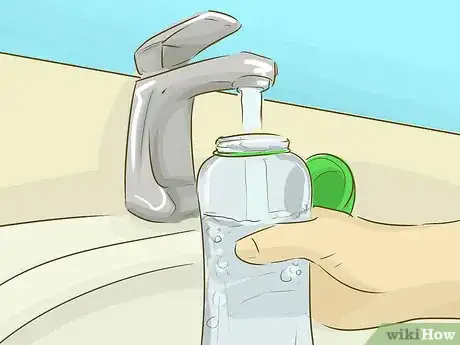

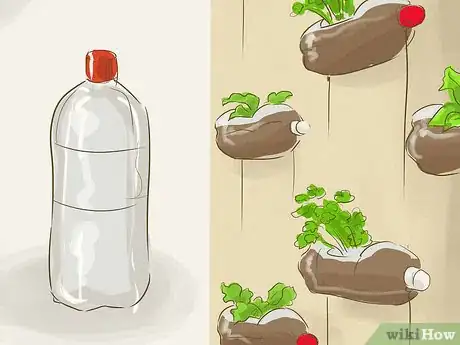

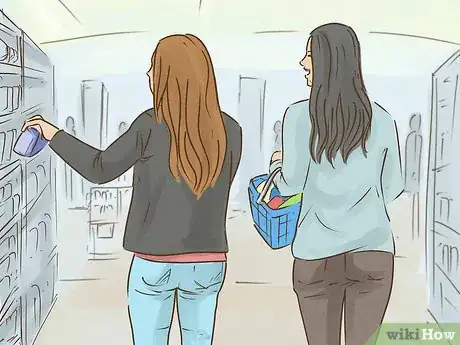
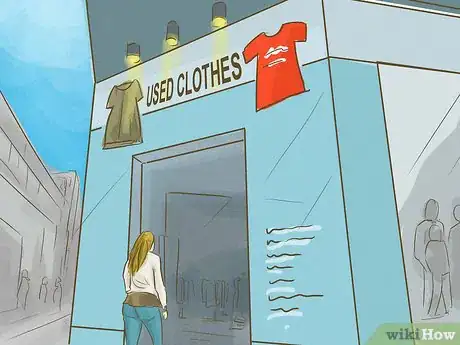
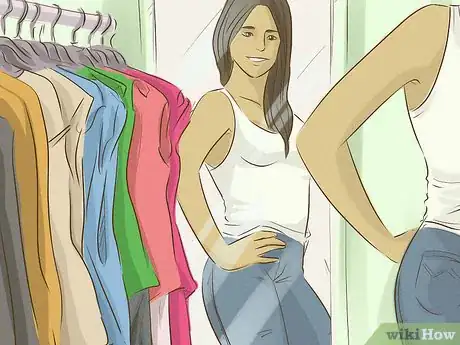
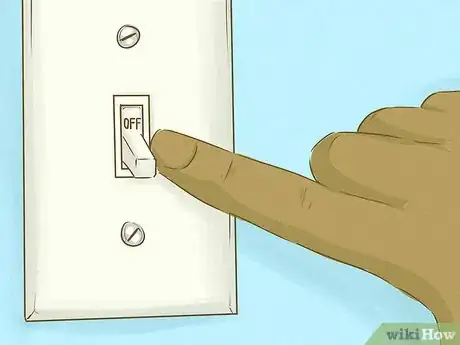

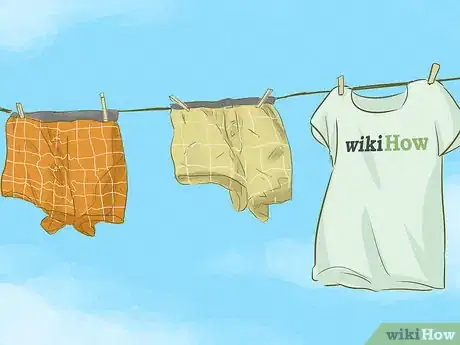
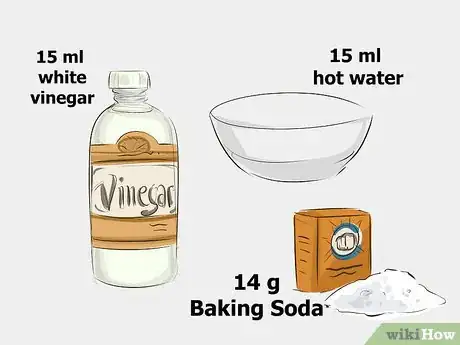
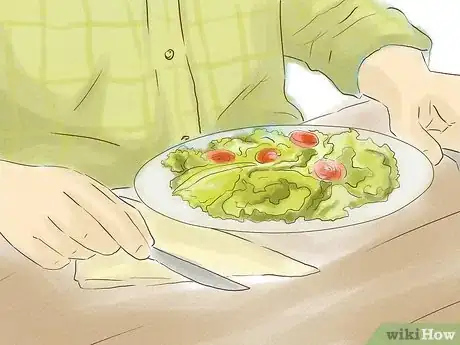
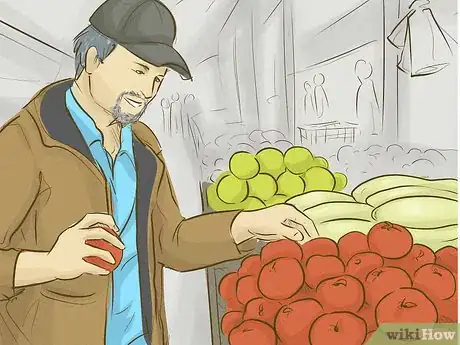

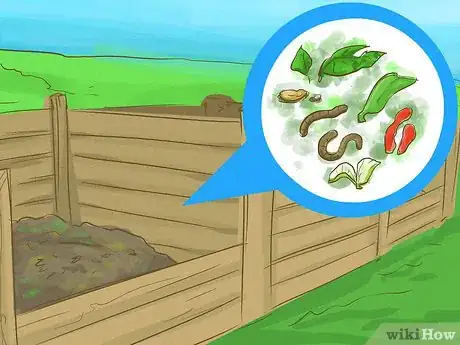

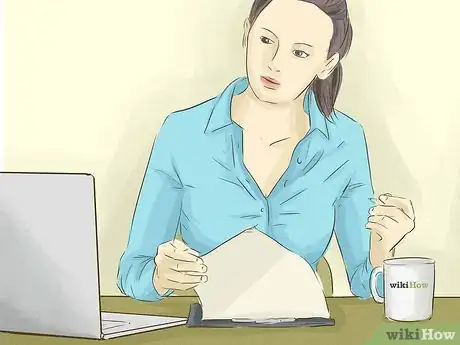
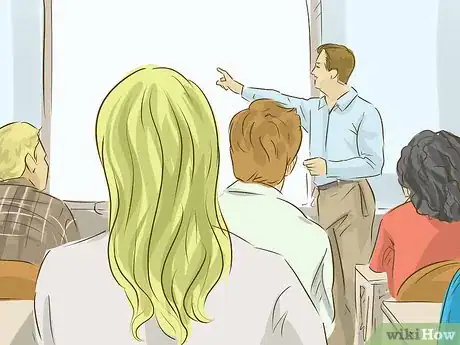
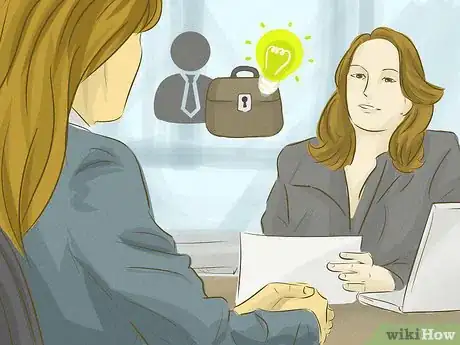
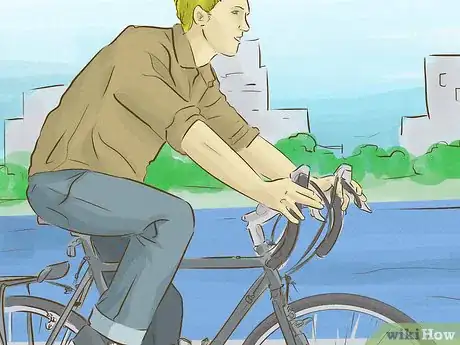
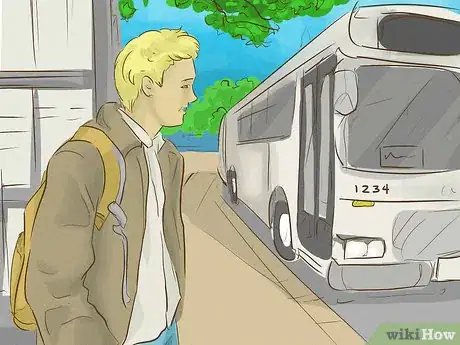
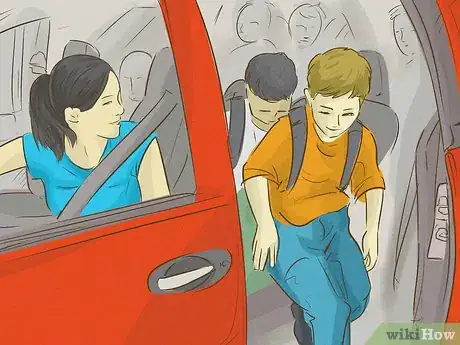
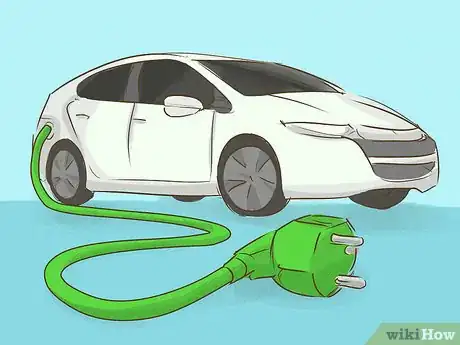
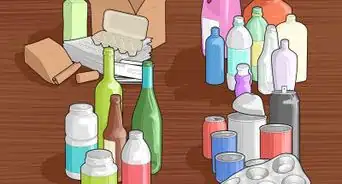




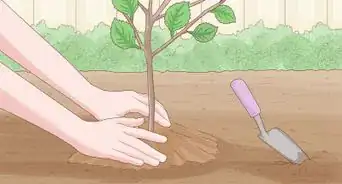




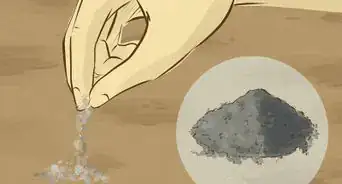
-Step-14-Version-6.webp)
